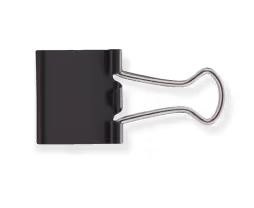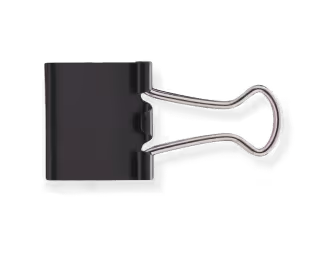Top 12 Functional Web Design Elements for Business Websites
Business websites are failing at an alarming rate. A recent survey reveals that 88% of online users won't return to a site after a bad experience. The way your website functions shapes how prospects trust, interact, and convert. And the gaps aren’t always obvious.
If a website feels clunky, visitors can and will bounce, lose trust, or click away without a second thought.
That silent drop-off is often blamed on design, but the real issue runs deeper. Looks alone can’t fix broken forms, confusing flows, or slow-loading pages
In this article, you'll learn which functional design elements every business website needs and how to apply them to improve usability, build trust, and increase conversions.
1. Crystal Clear Navigation
When someone lands on your site, their brain instantly tries to make sense of what to do next. If the navigation is confusing or cluttered, they won’t dig deeper; they’ll leave. According to Hostinger, 79% of visitors abandon websites due to poor navigation and confusing web page layouts.
A clear, well-structured navigation bar helps users find what they’re looking for without feeling lost. Whether it’s product details, support options, or pricing, the route should feel obvious. If users have to pause and think, you’ve already lost momentum.
Best Practices:
- Keep the main menu between five to seven items
- Use familiar labels, not internal team jargon
- Make search accessible from every page
- Use breadcrumb trails for deeper pages
- Group related items together under clear drop-downs
- Ensure mobile navigation collapses cleanly without losing functionality
2. Fast-Loading Pages
Page speed can practically make or break your conversion rates. If your site takes more than three seconds to load, about 40% of visitors will drop off. That’s nearly half your audience gone before they even see your offer.
Every delay, including images loading slowly, scripts stacking up, erodes user trust and patience. A fast website simply feels more professional, more reliable, and more worth their time.
Best Practices:
- Compress images without losing quality using modern formats like WebP
- Minimize HTTP requests by combining CSS and JavaScript files
- Choose reliable hosting with adequate bandwidth for your traffic volume
- Enable browser caching to reduce repeat visitor load times
- Test loading speed regularly across different devices and connections
3. Mobile-First Responsive Design
Mobile traffic accounts for more than half of global web traffic, making responsive design non-negotiable. However, many businesses still treat mobile as an afterthought rather than the primary experience.
True mobile-first design involves building for small screens first, then scaling up. This approach ensures that the most constrained environment gets the best treatment. The result is cleaner, more focused designs that perform better across all devices.
Best Practices:
- Design touch-friendly buttons with adequate spacing between elements
- Optimize text size for readability without requiring zoom gestures
- Simplify forms and checkout processes for thumb-based navigation
- Test functionality across various screen sizes and orientations
- Prioritize critical content above the fold on mobile devices
4. Clear Call-to-Actions (CTAs)
People don’t always know what to do next, so it helps to tell them. A strong CTA guides users without feeling pushy. It should stand out visually but also make sense in the flow of the page.
Placement is everything. If someone is convinced mid-scroll but your CTA is buried at the bottom, that’s a missed opportunity. Clarity beats cleverness every time.
Best Practices:
- Use direct language like “Start Free Trial” or “Get Quote”
- Keep CTAs visually distinct from the surrounding text
- Place CTAs where user intent peaks
- Create visual contrast with colors that stand out from your brand palette
- Avoid too many CTAs on a single screen to prevent decision fatigue
- Test small copy tweaks for big changes in click-through rate
Also read: How one small CTA radically improved our conversion rates
5. Trust Signals and Social Proof
Trust drives purchasing decisions, especially for first-time visitors who know nothing about your company. Social proof elements like testimonials, reviews, and client logos build credibility quickly.
Security badges and certifications address safety concerns that could otherwise derail conversions.
The most effective trust signals feel authentic and relevant to your target audience. Generic testimonials or fake reviews backfire by creating suspicion instead of confidence.
Best Practices:
- Display customer testimonials with photos and specific details about results
- Include recognizable client logos to establish industry credibility
- Add security certificates and payment badges near checkout areas
- Show real user reviews with both positive and constructive feedback
- Feature case studies that demonstrate measurable outcomes for similar businesses
6. Live Chat or AI Chat Support
People expect real-time answers. When no one’s available, they move on. Live chat or AI-based support fills that gap, especially during product research or technical confusion.
According to the latest reports, 99% of B2B marketers admit AI chatbots have improved their lead conversion rates. Studies also imply that 55% of businesses are able to generate high-quality leads through chatbot integration.
The key is making support feel helpful rather than intrusive. Proactive chat invitations work best when triggered by specific user behaviors that indicate interest or confusion.
Automated chatbots handle basic questions while human agents focus on complex sales conversations.
Best Practices:
- Trigger chat invitations based on time spent on specific pages
- Train chat agents to qualify leads while providing genuine assistance
- Integrate chat history with your CRM for seamless follow-up conversations
- Offer offline messaging options when agents aren't available
- Use chatbots for FAQ responses while keeping human escalation simple
7. Intuitive Search Functionality
Site search reveals user intent better than any analytics tool. Visitors who use search convert 1.8 times more than those who don't, making search functionality a powerful conversion tool.
However, most business websites treat search as an afterthought with basic keyword matching.
Advanced search features like filters, autocomplete, and typo tolerance dramatically improve the user experience. Strive to help visitors find exactly what they need with minimal effort.
Best Practices:
- Include autocomplete suggestions to speed up the search process
- Add filters for categories, price ranges, and other relevant attributes
- Display "no results" pages with helpful alternatives and suggestions
- Track search queries to identify content gaps and optimization opportunities
- Position the search bar prominently in your header across all pages
8. Seamless Form Design and Optimization
Forms are conversion bottlenecks that most businesses handle poorly. Long, complicated forms with unclear labels frustrate users and kill conversions. The best forms feel conversational and only ask for essential information.
Progressive profiling allows you to gather additional data over time rather than overwhelming new prospects. Smart form design considers user psychology and reduces friction at every step of the completion process.
Best Practices:
- Request only essential information to minimize abandonment rates
- Use clear, descriptive labels that explain exactly what you need
- Provide real-time validation to catch errors before form submission
- Group related fields logically to create a natural completion flow
- Include progress indicators for multi-step forms to set expectations
9. Robust Analytics and Tracking Setup
Data drives optimization, but only when you're measuring the right metrics. Most businesses track vanity metrics like page views while ignoring conversion-focused data.
Proper analytics setup reveals user behavior patterns, conversion bottlenecks, and optimization opportunities.
Heatmaps show where users click and scroll, while conversion funnels identify where prospects drop off. This intelligence transforms guesswork into strategic decisions.
Best Practices:
- Set up goal tracking for all important user actions and conversions
- Use heatmap tools to understand how visitors interact with your pages
- Create custom dashboards that focus on business-critical metrics
- Track user journeys from first visit through conversion and beyond
- Regular analytics reviews should inform design and content decisions
10. Comprehensive Security Features
SSL certificates are just the beginning of proper website security. Regular updates, secure hosting, and backup systems protect against various threats. B2B customers notice security indicators and make purchasing decisions based on perceived safety.
The investment in robust security pays dividends through increased conversions and protected business continuity.
Best Practices:
- Install SSL certificates and ensure all pages load with the HTTPS protocol
- Keep all software, plugins, and themes updated to patch security vulnerabilities
- Implement regular automated backups with easy restoration capabilities
- Use strong password policies and two-factor authentication for admin access
- Display security badges prominently to reassure visitors about data protection
11. Easy-to-Find Contact Information
Hidden contact details signal poor customer service before prospects even reach out. Studies reveal that 44% of website visitors will leave if they can't find contact information easily.
Visible contact options build trust and reduce purchase anxiety. The best approach involves multiple contact methods that cater to different communication preferences.
Phone numbers, email addresses, and physical locations should be accessible from every page without hunting through menus.
Best Practices:
- Place contact information in your website header or footer for consistent visibility
- Include multiple contact methods like phone, email, and contact forms
- Add location information with maps for businesses with physical storefronts
- Create a dedicated contact page with detailed information and directions
- Ensure contact details are clickable on mobile devices for one-tap communication
12. Accessible and Inclusive Design
Accessibility opens your website to everyone while improving usability for all visitors. Over 1.3 billion people worldwide have disabilities, representing a significant market opportunity that most businesses ignore.
Accessible design benefits everyone through clearer navigation, better color contrast, and more intuitive interfaces. Beyond moral obligations, accessibility compliance protects against legal risks and expands your potential customer base considerably.
Best Practices:
- Use sufficient color contrast ratios for text readability across all backgrounds
- Add alt text to images for screen readers and improved SEO performance
- Ensure keyboard navigation works smoothly for users who can't use a mouse
- Design with a clear visual hierarchy using proper heading structures
- Test your website with accessibility tools and real users with disabilities
Generic template-based websites struggle to implement these functional elements effectively. Templates offer basic functionality but lack the flexibility needed for strategic customization.
While not all small businesses require a custom website, if conversion optimization and serious brand building matter for your B2B SaaS business, templates become limiting factors.
Boost ROI With a Custom-Crafted Website by Beetle Beetle
Many sites look clean on the surface but fail to convert. Why? Because they aren't built with intent. Functional design is more than how something looks; it’s how it works, feels, and adapts to real people’s decisions. That’s what drives trust and performance over time.
At Beetle Beetle, we design and build websites that match the energy of your SaaS product. We dig deep into your users’ habits, your sales model, and your brand goals, and then shape a site that quietly does the heavy lifting for you.
Every decision we make revolves around branding, conversion clarity, and long-term adaptability.
Let’s build a website that doesn’t just sit there looking pretty. Hire Beetle Beetle for a high-performance website design today.


.jpg)





























